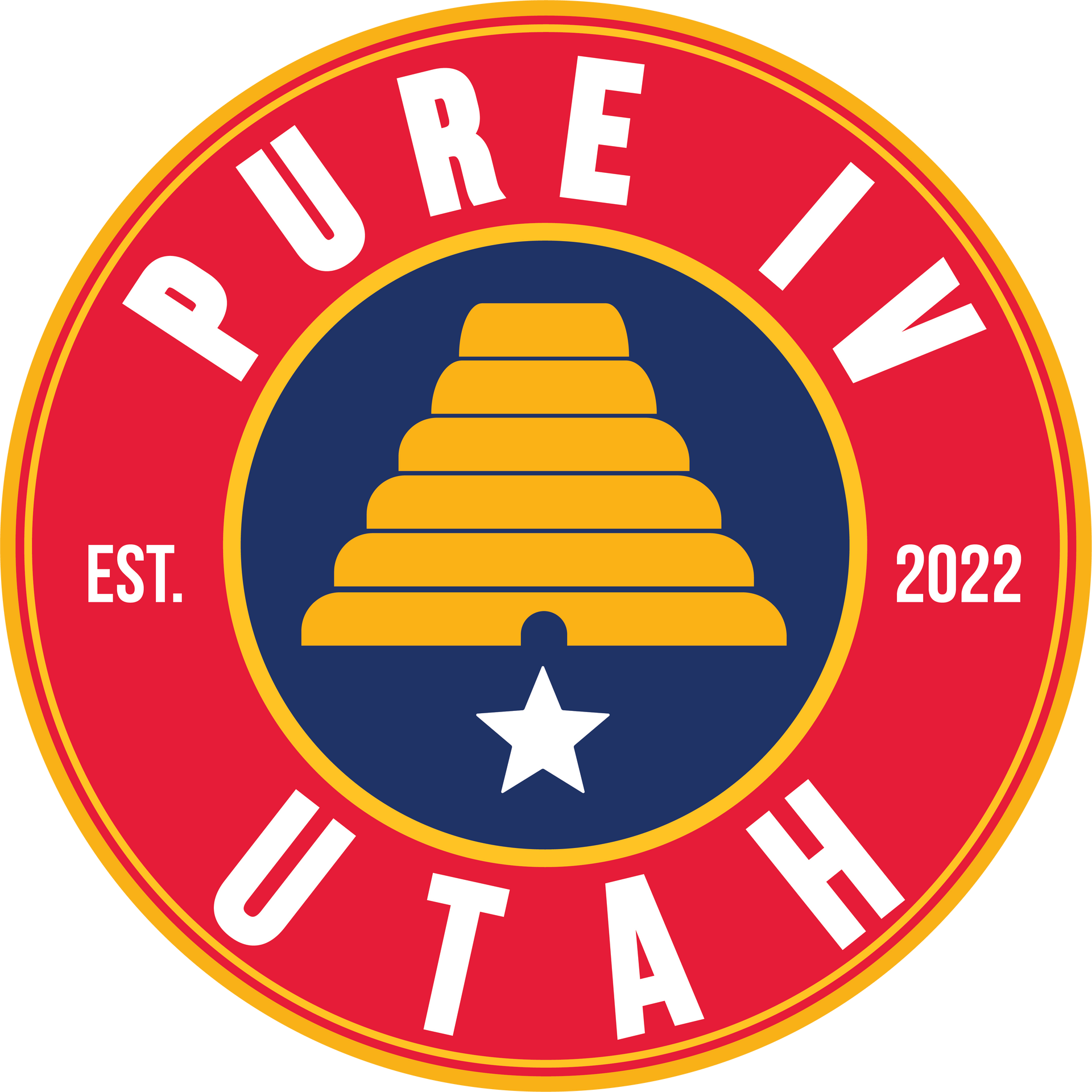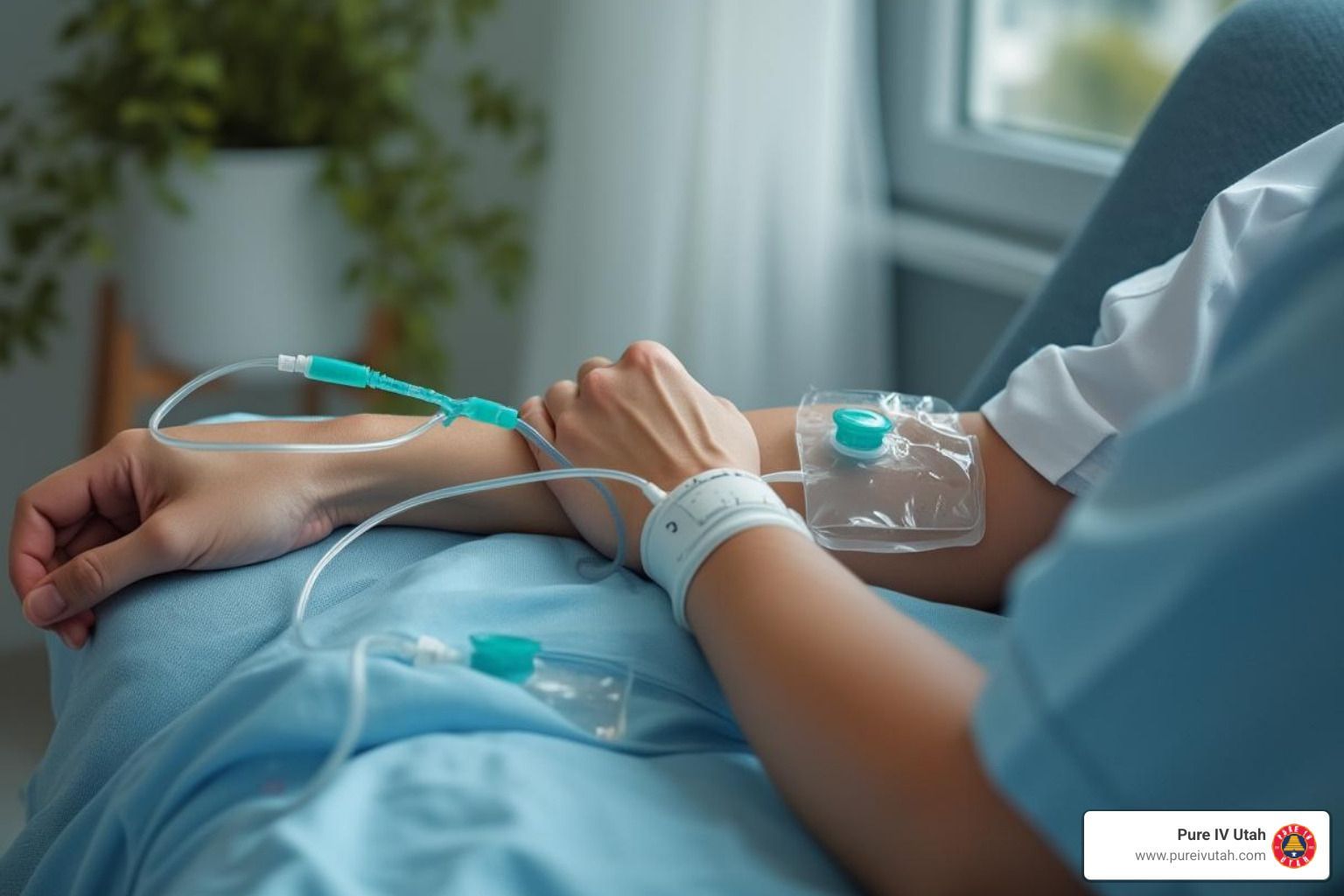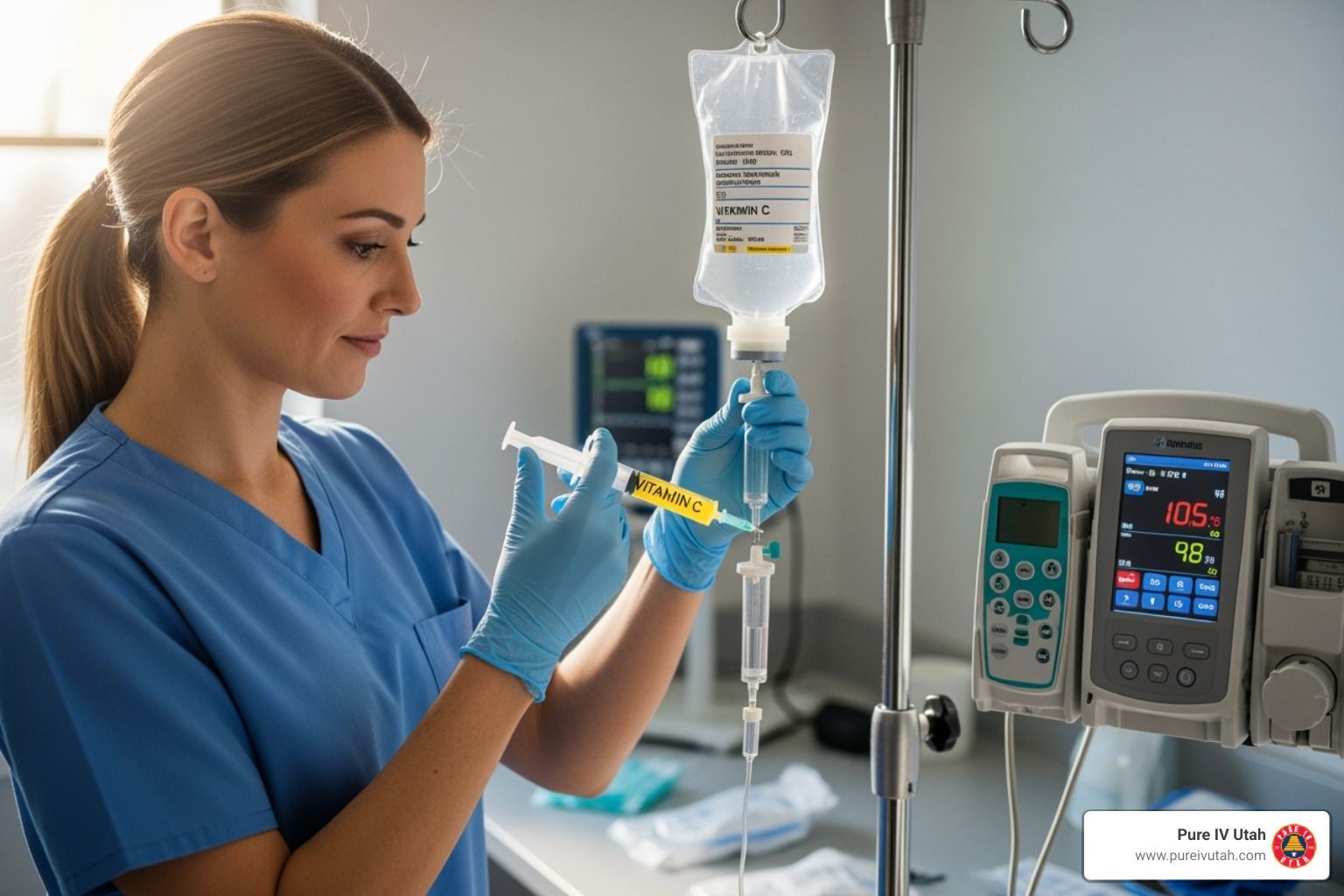Managing Hyponatremia With IV Fluids for Low Sodium

Medically reviewed by Micaela Strevay, FNP-C, PMHNP-BC
Joseph Lopez • October 1, 2025
Table of Contents
Hyponatremia is a condition that occurs when the level of sodium in your blood falls below 135 mEq/L. Sodium is a vital mineral that helps regulate fluid balance, muscle contraction, and nerve function. When sodium levels drop too low, the body’s cells absorb more water, resulting in swelling and disruption of normal cellular functions.
This condition is more common in older adults, kidney patients, hospitalized patients, and endurance athletes who lose large amounts of sodium through sweat. Understanding its causes, symptoms, and treatment options—especially IV fluids— helps prevent serious complications.
For individuals who need safe, professional IV therapy, providers like Pure IV Utah specialize in IV hydration and wellness services, offering medical oversight and personalized care.
Causes of Hyponatremia
Hyponatremia can occur for many different reasons.
Excess Water/Fluid Intake or Retention
Your kidneys are designed to filter and excrete excess water to balance electrolytes. However, if you drink too much water in a short period of time, the kidneys cannot keep up. This floods the bloodstream, diluting sodium and lowering its concentration.
A medical condition called SIADH (Syndrome of Inappropriate Antidiuretic Hormone) is another cause. In SIADH, the body releases too much antidiuretic hormone, which makes the kidneys retain water. This leads to low sodium because the extra fluid dilutes it. SIADH is often linked to lung disease, certain cancers, brain injuries, or medications.
Certain Medications
Several commonly prescribed medications disrupt the way your body regulates sodium:
- Diuretics (water pills): Widely used for high blood pressure and heart failure, these drugs make you urinate more. Along with water, sodium and potassium are lost, which causes imbalances if not monitored.
- Antidepressants (SSRIs and tricyclics): These may increase antidiuretic hormone activity, leading to water retention and sodium dilution.
- Pain relievers (NSAIDs): Drugs like ibuprofen can reduce kidney function, altering how the kidneys manage sodium and water.
- Other drugs: Chemotherapy and seizure medications can also interfere with fluid and electrolyte balance.
When taken long-term, these medications increase the risk of hyponatremia, especially in older adults.
Medical Conditions
Chronic illnesses often contribute to sodium imbalance by changing how the body handles water and electrolytes:
- Heart failure: When the heart can’t pump efficiently, blood flow to the kidneys decreases. This triggers the body to retain water and sodium, but water retention usually outweighs sodium, diluting levels in the blood.
- Chronic kidney disease: Healthy kidneys filter waste and keep electrolytes stable. In kidney failure or advanced disease, this process weakens, making it harder to maintain sodium balance. Both excess water retention and sodium loss can occur.
- Liver cirrhosis: Liver damage causes fluid to leak into the abdomen (ascites) and other tissues. This reduces the concentration of sodium in circulation, leading to persistent hyponatremia.
These conditions often require careful management with fluid restriction, dietary adjustments, and sometimes IV fluids for correction.
Vomiting, Diarrhea, and Sweating
These are some of the most common short-term causes of hyponatremia.
- Vomiting: Every time you vomit, your body loses fluids, hydrochloric acid, and electrolytes like sodium, potassium, and chloride. This reduces the level of sodium in the body.
- Diarrhea: Prolonged or repeated diarrhea drains both fluids and electrolytes. If not replaced quickly, the body becomes both dehydrated and sodium-deficient.
- Sweating: Sweat contains high amounts of sodium. Endurance athletes, such as marathon runners, are especially at risk. Without electrolyte replacement, sodium can drop further, triggering sudden hyponatremia.
In all three cases, IV fluids with sodium, like NAD+ IV therapy offered by Pure IV Utah, restore balance faster.
Hormonal Disorders
Certain hormone-related conditions can also contribute to low sodium levels:
- Hypothyroidism (low thyroid function): The thyroid regulates metabolism, which influences how the body processes water and electrolytes. Low thyroid hormone can reduce kidney function, leading to fluid buildup and diluted sodium.
- Adrenal gland problems (such as Addison’s disease): The adrenal glands normally release hormones like aldosterone, which help the body retain sodium and excrete potassium. When these glands don’t work properly, the body loses too much sodium, creating chronic or recurrent hyponatremia.
These conditions usually require medical management of the underlying hormonal imbalance in addition to sodium correction.
Post-Surgery or Hospitalization
Hyponatremia is surprisingly common in hospitalized patients, especially after surgery, intensive care, and in patients with kidney failure. Several factors contribute:
- IV fluids: Patients sometimes receive large amounts of IV fluids that do not contain enough sodium. This dilutes sodium levels in the bloodstream.
- Stress hormones: Surgery triggers a rise in stress hormones (like antidiuretic hormone). Post-surgery imbalances can cause a dramatic drop in sodium.
- Procedures or medications: Some medical treatments, such as chemotherapy or diuretics used in hospitals, also disturb sodium balance.
This form of hyponatremia is often temporary, but because it happens in vulnerable patients, it requires close monitoring.
Symptoms of Hyponatremia
The signs of hyponatremia vary depending on how quickly sodium levels drop and how low they become. Early symptoms may feel vague and easy to overlook, but as the imbalance worsens, symptoms progress into serious, life-threatening complications.
Mild Symptoms
When sodium levels first begin to fall, the body and brain start to react. Common early warning signs include:
- Nausea and vomiting–The digestive system often reacts first to electrolyte disturbances, leading to stomach upset or repeated vomiting.
- Headache–A result of swelling in brain cells caused by excess water moving into them.
- Fatigue or weakness–Low sodium disrupts energy production in cells, making you feel unusually tired.
- Muscle cramps–Sodium plays a role in muscle contraction; without it, cramps and spasms become more frequent.
- Trouble concentrating (mental status changes)–Even mild imbalances affect the brain, leading to “mental fog” or a short attention span.
At this stage, many people don’t realize they are developing hyponatremia.
Moderate to Severe Symptoms
As sodium levels continue to drop, the nervous system and cardiovascular system are strongly affected. Symptoms may include:
- Severe confusion or disorientation–Brain cells swell as water enters them, leading to changes in thinking, memory, or awareness.
- Tremors or seizures–Severe electrolyte imbalance can overstimulate or disrupt nerve signals, triggering shaking or seizures.
- Irregular heartbeat (arrhythmia)–Sodium is vital for electrical signals in the heart; too little can cause palpitations or dangerous rhythm disturbances.
- Difficulty breathing–Muscle weakness and fluid imbalances can interfere with normal breathing.
- Fainting or loss of consciousness–Extremely low sodium deprives the brain of stable function, which may cause collapse.
In sudden hyponatremia, the dramatic drop in sodium can quickly cause brain swelling and dangerous neurological complications.
The Role of IV Fluids for Low Sodium

IV fluids are one of the primary treatments for low sodium, as they correct both the fluid imbalance and the electrolyte imbalance that cause low sodium levels.
Types of IV Fluids Used
There are many types of IV fluids, but not all can be used to correct low sodium levels in the body.
- Isotonic saline (0.9% sodium chloride)–This is the most common starting point for treatment. Isotonic saline replaces fluid volume and gradually raises sodium levels in mild to moderate cases. It’s often given to patients who are dehydrated from vomiting, diarrhea, or medications such as diuretics.
- Hypertonic saline (3% sodium chloride)–Reserved for severe hyponatremia, especially when neurological symptoms like seizures, severe confusion, or fainting are present. Because it has a much higher concentration of sodium, hypertonic saline must be administered slowly and under close monitoring. Rapid correction can be dangerous and lead to osmotic demyelination syndrome (ODS), a condition where nerve cells in the brain are damaged.
- Potassium supplementation–Sodium and potassium work closely together to maintain cellular balance. When potassium levels are also low—a common finding in hyponatremia—potassium chloride may be added to IV therapy. Correcting potassium can indirectly help sodium levels stabilize more effectively.
- Specialized IV solutions–In certain cases, IV fluids may be combined with other treatments such as loop diuretics (to remove excess water while correcting sodium) or tailored electrolyte solutions, depending on the patient’s underlying condition.
How IV Fluids Help in Hyponatremia
- Rehydrating the body–Fluids lost from vomiting, diarrhea, or sweating are replaced, preventing further dehydration.
- Restoring sodium and electrolyte balance–Carefully controlled sodium infusion brings levels back into the safe range.
- Protecting the brain–Correcting sodium too slowly risks ongoing swelling, while correcting it too fast risks nerve damage. Proper IV therapy strikes the right balance.
- Stabilizing vital signs–By improving blood pressure, heart rhythm, and overall circulation, IV fluids support recovery from complications of low sodium.
Treatment usually happens in a hospital or clinic, where providers monitor blood sodium levels, urine output, and vital signs closely to prevent complications.
Supporting Recovery and Prevention
After initial treatment, preventing hyponatremia from recurring is key. Some strategies include:
- Treating the underlying cause (kidney, heart, or hormonal issues).
- Avoid overhydration by balancing fluid intake and electrolyte intake.
- Monitoring dry weight in kidney patients to avoid fluid overload.
- Adjusting medications that affect the level of sodium, under a doctor’s guidance.
- Using oral rehydration or electrolyte drinks during heavy exercise or illness.
- Using tools comprehensive enough to track sodium levels, weight, and progress.
- Sharing patient stories to highlight risks and recovery journeys.
Getting Professional IV Support for Low Sodium
Hyponatremia is a serious condition that requires expert care, especially when IV fluids are part of the treatment. While mild cases may sometimes be managed with dietary changes or oral hydration, more severe cases must be treated under close medical supervision.
Incorrect IV fluid administration—such as giving the wrong solution or infusing it too quickly—will worsen sodium imbalances and increase risks to the brain and heart.
That’s why working with licensed providers is essential. Professionals carefully evaluate your condition, order lab tests, and design treatment plans tailored to your needs. During IV therapy, they monitor sodium levels, vital signs, and urine output to ensure the correction happens safely and effectively.
For safe and professional IV hydration support, Pure IV Utah offers trusted IV treatments delivered by a licensed team. Our team focuses on medical safety and personalized care, helping restore electrolyte balance, support recovery, and promote long-term wellness.





